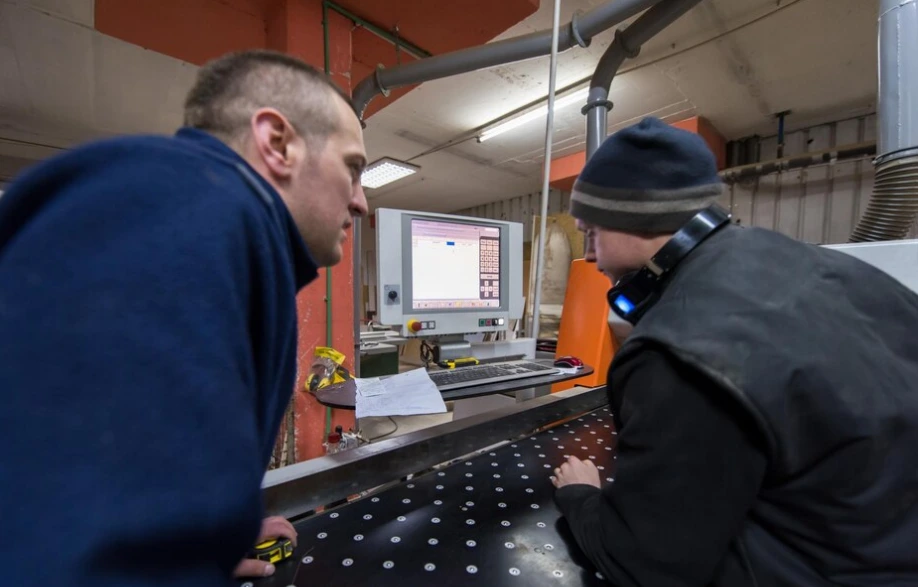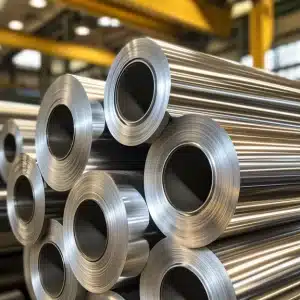
Why Digital Radiography vs. Film Matters in Weld Defect Analysis
In industries where safety and performance are non-negotiable, choosing the right inspection method can make all the difference. Understanding digital radiography vs. film is essential when analyzing weld defects, as each method offers unique advantages and limitations. From image clarity to data handling and safety protocols, your decision impacts not only inspection outcomes but also cost, efficiency, and compliance.
This post explores the differences between digital and film radiography for weld defect analysis, providing clear insights to help you select the best method for your application.
Understanding Weld Defect Analysis
Digital radiography vs. film is a key consideration in modern weld defect analysis—a critical process for ensuring the safety, reliability, and longevity of pressure vessels, pipelines, and structural components. At the heart of this analysis is non-destructive testing (NDT), which enables technicians to assess weld quality without damaging the material. When comparing digital radiography vs. film, it’s clear that each method plays a role in identifying defects, but understanding their differences is essential for selecting the most effective and efficient inspection technique.
Importance of Non-Destructive Testing (NDT) in Welding
NDT enables companies to detect internal flaws such as porosity, lack of fusion, slag inclusions, and cracks without disassembling or destroying the component. This is especially important in high-stakes industries like oil and gas, aerospace, and energy, where failure is not an option.
The Role of Radiography in Detecting Internal Flaws
Radiographic testing is one of the most trusted NDT techniques. It works by using X-rays or gamma rays to produce an image of the internal structure of a weld. Whether using digital radiography or film, this method helps technicians visualize inconsistencies that could compromise safety or performance.
Common Industries Requiring High-Integrity Weld Inspections
Industries that rely on high-integrity welds include:
- Oil & gas
- Power generation
- Aerospace
- Shipbuilding
- Construction
- Chemical processing
Each of these sectors must meet strict safety codes and standards, making radiographic testing essential.
What Is Film Radiography?
Film radiography is the traditional method of capturing weld images using X-rays on photosensitive film. While it’s a long-established approach, it’s increasingly being compared against its digital counterpart.
Overview of Traditional X-Ray Film Techniques
Film radiography involves placing photographic film behind the weld area and exposing it to radiation. After exposure, the film is developed using chemicals in a darkroom environment, revealing a high-resolution image of internal weld features.
Pros: High Resolution, Long-Established Process
- Exceptional detail for detecting small discontinuities
- Universally accepted by most codes and regulatory bodies
- Historical trust and established procedures make it a familiar choice for many inspectors
Cons: Time-Consuming, Chemical Handling, Physical Storage Needs
- Long processing time due to film development
- Chemical waste poses environmental and safety concerns
- Requires significant physical storage space
- Images cannot be enhanced or transmitted easily
What Is Digital Radiography?
Digital radiography has emerged as a modern alternative, offering faster processing, easier storage, and greater flexibility in image analysis.
How Digital Radiography Works in Weld Inspection
Instead of using physical film, digital systems capture radiographic images on a digital detector. These images are immediately available for review, analysis, and sharing—streamlining the inspection process.
Types: Computed Radiography (CR) vs. Direct Digital Radiography (DR)
- Computed Radiography (CR): Uses reusable imaging plates scanned into a digital format
- Direct Digital Radiography (DR): Uses flat-panel detectors for real-time image capture and processing
Advantages: Faster Results, Easy Storage, Enhanced Image Manipulation
- Instant image acquisition
- Digital storage and archiving
- Adjustable contrast and zoom features
- Minimal radiation exposure
Digital Radiography vs. Film: Key Comparison
Understanding the practical differences between digital radiography vs. film is essential for making the right choice in your inspection process.
Image Quality: Film Resolution vs. Digital Clarity
While film can deliver higher raw resolution, digital systems offer better image enhancement tools—making defects easier to identify and interpret.
Speed: Immediate Results with Digital
Digital radiography drastically reduces inspection and reporting time. Unlike film, there’s no need for chemical processing, enabling real-time decision-making.
Cost Efficiency: Long-Term Savings with Digital Equipment
Though initial equipment costs for digital systems are higher, they lead to lower operating expenses due to:
- Eliminated chemical and film costs
- Reduced labor
- Less rework
Data Storage: Digital Archives vs. Physical Storage
Digital images can be stored, retrieved, and shared with ease, improving communication between teams. Film requires large storage areas and is susceptible to damage over time.
Safety & Environmental Impact: Chemical Usage in Film vs. Digital Processes
Digital methods eliminate toxic chemicals and reduce radiation exposure—aligning with modern environmental and safety standards.
When to Use Each Method
Situations Where Film May Still Be Preferred
- Regulatory compliance: Some codes and legacy contracts still require film-based results
- Extremely high-resolution needs: Certain inspections may benefit from the nuanced detail of film
Industries Transitioning Toward Digital
Most industries are moving toward digital radiography due to its efficiency and ease of use. Companies aiming for leaner, safer operations often find digital systems more practical.
Hybrid Approaches in Real-World Applications
Some inspection teams adopt a hybrid approach, using digital for preliminary analysis and film for final verification in high-stakes scenarios.
Choosing Between Digital Radiography vs. Film
Deciding between digital radiography vs. film for weld defect analysis is more than a technical choice—it’s a strategic one. Film radiography offers proven reliability and exceptional detail, especially in industries with legacy systems and strict regulatory requirements. However, digital radiography continues to gain ground with its speed, cost efficiency, and ease of data management.
Both methods play a vital role in ensuring weld quality and structural integrity. At Red River, we recognize the importance of aligning inspection techniques with your project’s goals, safety standards, and operational needs. Whether you need traditional solutions or are ready to adopt modern, digital workflows, we’re here to support you with unmatched quality and a values-driven approach.
Your welds matter—so does your inspection method. Choose wisely. Choose Red River.
Need a reliable partner?
Red River specializes in the design and manufacturing of pressure vessels. We also fabricate related items such as prefabricated spools and skid packages.
Reach out to us today and experience the Red River difference. Where American-made products and American Values come together, we care more.
Frequently Asked Questions
1. What is weld defect analysis?
Weld defect analysis is the process of inspecting welds to detect internal or external flaws that could compromise structural integrity.
2. Why is radiography used in weld inspection?
Radiography enables inspectors to identify hidden defects inside welds without damaging the material—making it vital for safety-critical industries.
3. What is the biggest advantage of digital radiography?
The speed and efficiency—digital radiography delivers immediate results and allows for easy image storage and sharing.
4. Is film radiography still used today?
Yes, particularly in industries with stringent standards or where digital adoption is still in transition.
5. Which method offers better image quality?
Film can offer higher resolution in some cases, but digital systems provide enhanced contrast and image manipulation for detailed analysis.
6. Is digital radiography safer than film?
Yes, digital systems eliminate chemical processing and reduce radiation exposure, making them safer and more environmentally friendly.
7. What industries benefit most from digital radiography?
Oil & gas, aerospace, construction, and power generation—anywhere fast and reliable weld inspection is crucial.
8. Can digital and film radiography be used together?
Yes, some operations use both for compliance and quality assurance during transitional phases.
Key Takeaways
- Choosing digital radiography vs. film impacts inspection speed, accuracy, and cost.
- Digital methods offer faster, safer, and more efficient workflows.
- Film radiography still holds value in regulatory and ultra-high-resolution contexts.
The ideal choice depends on project scope, standards, and budget.
Related Blog Post

Marine-Grade vs Standard Stainless Steel

Pros and Cons of Vertical Integration

How to Dry Desiccant Properly and Regain Its Effectiveness

Why Do Gas Turbines Need Fuel Water Separator Vessels, Red River

How Does a Gas Turbine Fuel Water Separator Vessel Work
No related articles found.
